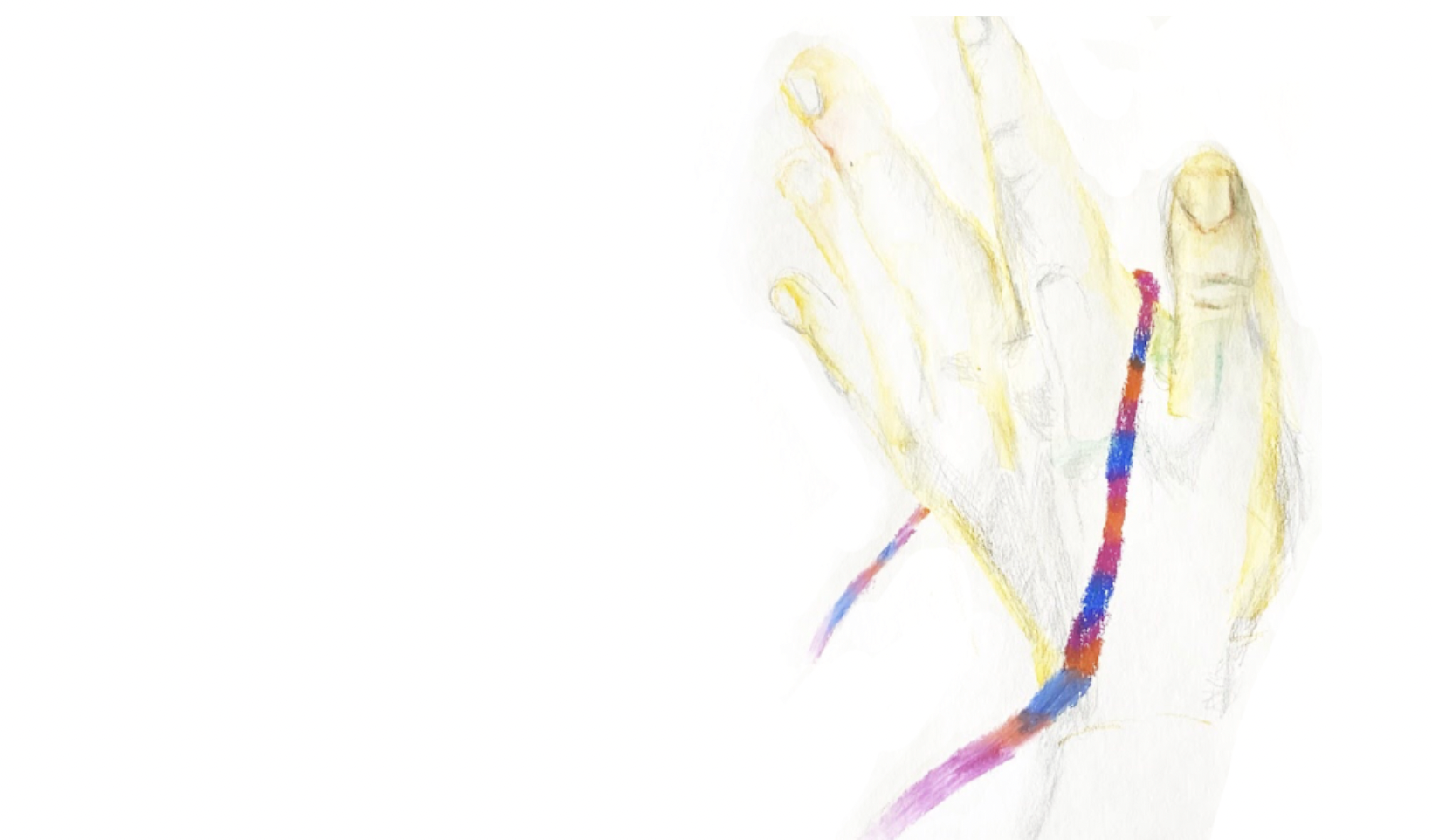The research presented below was completed during my graduate studies in the MSEd in Visual Art Education program through SUNY New Paltz.
I explore connections between my students’ artwork, daily experiences, open-ended ideas, and my own personal studio practice.

Research & Studio
My most recent body of artwork and art education research explores the ways in which we reflect on and process our daily experiences and introspective ideas. The visual poem, “Where do you hold your feelings?” is an animated compilation of words, videos, and drawings which come together to form a daydream-like journey. Thoughts and ideas fade in and out of focus, become obstructed and abstracted much like experiencing an open-ended and contemplative flow of thought.
Leisurely walking has become an essential element of my daily routine, which has certainly affected my studio practice. I ask the question, “Where do you hold your feelings?” and refer to ideas and feelings like seeds we must take the time to water and nurture into fruition. The question is intentionally ambiguous. I believe that the practice of being aware of how we feel, self-reflect, and think critically throughout our day is imperative for both self and worldly connection- it is a practice that I encourage and support my students in doing through the act of creating.
This practice has given me the opportunity to take a closer look and respond to my “automatic self,” for example, the thoughts I contemplate on walks, which give me insight into deeper ideas regarding my identity and relationships. I am interested in open-endedness, as well as the pleasure and discomfort it may evoke. Elliot Eisner refers to a “plant and seed” metaphor which implies that we must feed or nurture our [students’] ideas and respond intuitively to the ways in which they grow. My research and studio practice has allowed me to explore how I and my students respond to open ended ideas or art lessons, and has given me insight into the ways in which we may take the opportunity to express personal ideas from our own lived experiences.

What concepts do students explore when engaging in self-directed art-making?
Each time our students enter the classroom, we have the potential to uplift their individual voices and unique perspectives to encourage meaningful conversations and deep-rooted connections. Art is expressive, and we can continue to reframe art education and how we help students see their successes in a more holistic way as we shift the focus from aesthetic perfection to connection through individualized expressions.

Implementing a more open-ended art room
Based on my data observations, I have three insights:
1. Art Teachers can consider the order in which they present materials to scaffold both confidence and meaning-making skills in conceptional expression over the course of the school year.
2. Art Teachers can guide and prompt students by asking open-ended questions after each material-focused lesson and have students brainstorm conceptual topic ideas based on their knowledge of the materials and
3. Art Teachers can use observations to understand which materials their students connected and collaborated with to establish a more comfortable classroom environment when participating in collaborative projects.
If the Art Teacher’s goal is to create a more student-centered and open-ended art classroom, they may benefit from understanding how their students interact with the material to give insight into the order in which the materials should be presented to the students throughout the school year. We should consider the order in which we present materials to students based on the observed interactions students have with the materials. As Eisner (2002) mentions, “becoming smart” means learning the potential of the materials. We can guide students’ learning by noticing how they interact with the materials by observing patterns amongst the class and potentially re-teaching particular aspects. We must draw students’ attention to their relationship with the material. This will give the student insight into the ways they can use different materials to express different ideas.
Ask yourself: What materials are my students most comfortable with? This may be an excellent material to provide when introducing your students to the idea of creating personal meaning through their artwork. According to my data, their observed confidence with the material correlated with a wider range of outcomes and specificity.
Ask yourself: What materials offered the most challenges to students? It may be helpful to provide this material afterstudents demonstrate success in understanding how to use artistic techniques to express more personally relevant concepts.
Ask yourself: Was there a particular material in which my students connected and collaborated with each other? Choosing this material for group or collaborative projects may help students focus more on the content and concepts, rather than frustrations with the materials.







